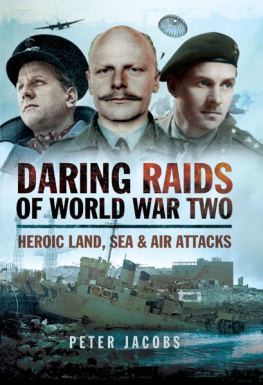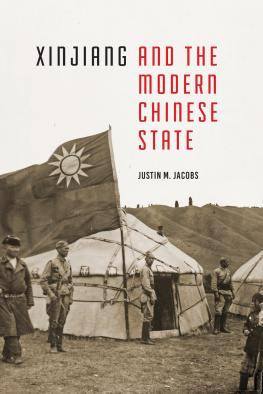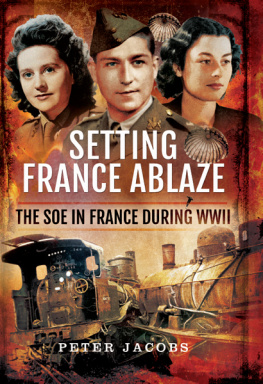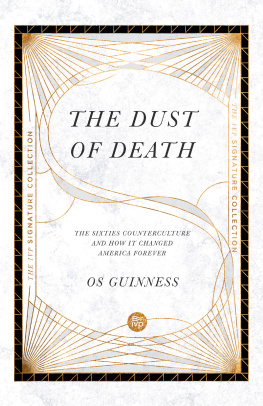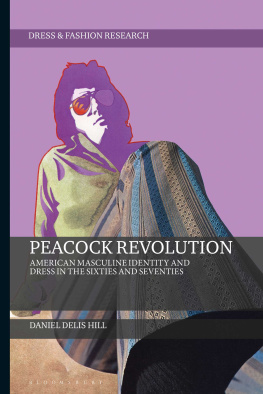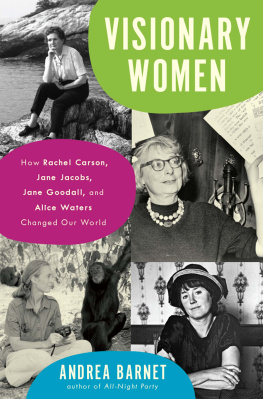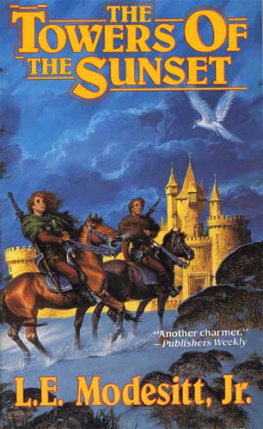Jacobs - Daydream sunset: the sixties counterculture in the seventies
Here you can read online Jacobs - Daydream sunset: the sixties counterculture in the seventies full text of the book (entire story) in english for free. Download pdf and epub, get meaning, cover and reviews about this ebook. City: United States, year: 2016;2015, publisher: CounterPunch Books, genre: Politics. Description of the work, (preface) as well as reviews are available. Best literature library LitArk.com created for fans of good reading and offers a wide selection of genres:
Romance novel
Science fiction
Adventure
Detective
Science
History
Home and family
Prose
Art
Politics
Computer
Non-fiction
Religion
Business
Children
Humor
Choose a favorite category and find really read worthwhile books. Enjoy immersion in the world of imagination, feel the emotions of the characters or learn something new for yourself, make an fascinating discovery.
Daydream sunset: the sixties counterculture in the seventies: summary, description and annotation
We offer to read an annotation, description, summary or preface (depends on what the author of the book "Daydream sunset: the sixties counterculture in the seventies" wrote himself). If you haven't found the necessary information about the book — write in the comments, we will try to find it.
Jacobs: author's other books
Who wrote Daydream sunset: the sixties counterculture in the seventies? Find out the surname, the name of the author of the book and a list of all author's works by series.
Daydream sunset: the sixties counterculture in the seventies — read online for free the complete book (whole text) full work
Below is the text of the book, divided by pages. System saving the place of the last page read, allows you to conveniently read the book "Daydream sunset: the sixties counterculture in the seventies" online for free, without having to search again every time where you left off. Put a bookmark, and you can go to the page where you finished reading at any time.
Font size:
Interval:
Bookmark:
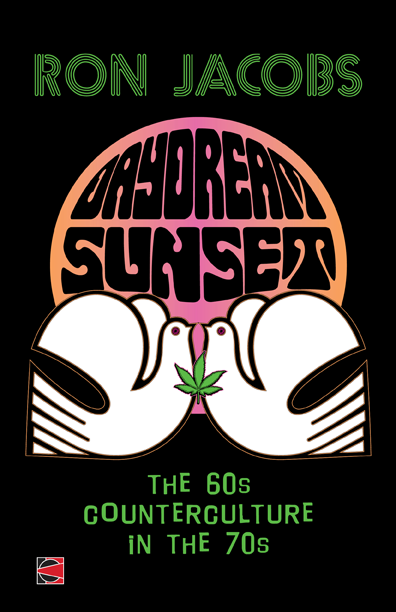
Praise for Daydream Sunset
and Ron Jacobs
The 'Sixties' is mostly myth and symbol now, a commodity sold in the marketplace as both cautionary tale and unattainable romance, but Ron Jacobs isnt buying it. In Daydream Sunset , part memoir, part lament, part impressionistic social history, he dives headfirst into the wreckage in order to paint an intimate portrait of a revolution that almost wasthe widespread sense of possibility, the accelerating drive and energy, the certainty that everything old must be put on trial and anything new was worth a try, and the intoxicating soundtrack beating out the contradictory rhythms of individualism and collectivity, narcissism and social purpose."
Bill Ayers , author of Fugitive Days and Public Enemy
"This is a freaks history of the 1960s and 70s told by a street active, cannabinoided participant who leaves no turn unstoned and no reactionary unscathed. Jacobs captures the era when both individual imagination and communal cooperation flourished. Its not only a glimpse into the past, but a three-dimensional map of future possibilities."
Michael Simmons , High Times and Mojo
For those who lived this life, the book will be an eye opener. We were in extraordinary times still, a cresting of the wave that changed our lives. And we rode the wave down. For the young radical, or betrayed Obama canvasser or Occupy soldier, this is crucial reading. Every page presents information for todays movements, and dazzling tales of creative dissent.
Paul Lacques , I See Hawks in LA
Ron Jacobs is a master storyteller in the tradition of Don DeLillo, unafraid to create bold and radical characters.
Roxanne Dunbar Ortiz , author of An Indigenous Peoples History of the United States
Ron Jacobs is a master whos been there, done that, and lived to tell a tale or two.
Ramsey Kanaan , Publisher PM Press
Jacobss The Way the Wind Blew ...is an accessible, readable and compelling history of their (the Weather Undergrounds) activities
Alexander Bloom , Journal of American History
Tripping Through the American Night ....is informative and, well, fun .... This is Jacobs gift--his ability to describe world-historic events swirling around him in the simplest, most open-minded and most unfiltered way.
Keith Rosenthal , Socialist Worker
Ron Jacobs is one of my favorite writers.
Dave Zirin , The Nation
Daydream Sunset
Daydream Sunset
The Sixties Counterculture in the Seventies
By Ron Jacobs
To the freaksthey know who they are
COUNTERPUNCH BOOKS
An Imprint of the Institute for the
Advancement of Journalistic Clarity
DAYDREAM SUNSET. Copyright 2015 by Ron Jacobs and CounterPunch Books. All rights reserved.
For information contact:
CounterPunch Books,
PO Box 228,
Petrolia, California. 95558.
www.counterpunch.org
Interior Design by Erik Clampitt and Nick Roney
Cover Design by Chelsea Mosher
Copyediting by Ethan Schiller
Back cover photograph to Donna Bister, 2013
Jacobs, Ron.
Daydream Sunset: the sixties counterculture in the seventies.
ISBN-13: 978-0692389614
ISBN-10: 069238961X
Foreword
You can go to the Weathermen
or you can go to Vermont
By Paul Lacques
Ron Jacobs' riveting new book on 1970s counterculture will stir to life the memories of the generation that hit young adulthood as the fabled 60s waned, painfully aware that we had missed the big party.
But the 70s were vibrant and wild, an advance of the hippie/eco ethos, even as America turned indifferent and hostile to tie dye and patchouli. The Revolution didnt happen. But the deeper work began.
Jacobs lays out the events and relationships of the decade with clarity and insight; but he slips effortlessly into the wildly optimistic, semi-crazed voice of his youth in gripping personal anecdotes.
Ron was there, and now so are you.
Made visceral are festivals and street demonstrations and riots, when sheer numbers of the young, free, and high created their own temporary community and environment, immune by sheer size to the fears of the straight world and their attempts to shut it down. There were some dangerous moments for the ruling class.
For those who lived this life, the book will be an eye opener. We were in extraordinary times still, a cresting of the wave that changed our lives. And we rode the wave down.
For the young radical, or betrayed Obama canvasser or Occupy soldier, this is crucial reading. Every page presents information for todays movements, and dazzling tales of creative dissent.
Delicate tendrils and vines have survived, yea, thrived: yippie, punk, anti-nuke, autonomen, squatter, anarchist, Green, ecofeminist, commune farmer, Metropolitan Indian, LGBT activist, comix artist, NORML, psychedelic warriors, Deadheads, underground music and art. Thrived enough to pass on their DNA.
If there is hope under these darkening skies, it is in the maturing wisdom of the counterculture living on in the young. This book lays out that wisdom so well I felt like I was understanding things about my own decade for the first time.
And so one hopes.
Paul Lacques is a songwriter and guitarist for the band "I See Hawks in LA".
Introduction
In early summer 1969 I was in a car with some friends on my way to Columbia, Maryland. The plan was to go swimming in the new indoor pool that had just opened in this model city. Our car headed out of the suburban town of Laurel, Maryland on Route 198. When we reached the spot where Route 198 intersected with US 29 we were met by a huge traffic jam. Every single car was full of young people just a couple years older than our thirteen to fifteen-year-old selves. We asked some guy hanging out a car window what was going on.
The Who, man! he shouted. Theyre playing at Merriweather. Merriweather Post Pavilion is an outdoor amphitheater where music of all kinds is performed. Our car joined the line and I attended my first rock concert. The venue had opened the gates, although I never got closer than several thousand feet from the stage and never actually physically saw either band. The opening group was one I had never heard of: Led Zeppelin. Less than three months later they co-headlined a rock festival with Frank Zappa and the Mothers of Invention at the racetrack in my hometown. Their music would become synonymous with the upcoming decade, the 1970s. As for The Who, their rock opera Tommy would become one of the biggest selling albums of the year and place the band firmly in the same rock and roll stratosphere already occupied by the Rolling Stones, Bob Dylan and The Beatles.
A year later the Beatles were no more and the Rolling Stones were in the studio attempting to make sense of their free concert the previous December in Altamont, California. Bob Dylan had just released an album of standards that would be almost universally panned. Dylan didnt give a shit what the critics thought. His backup band called simply The Band was on the road, reaping the benefits of their first hit single Up On Cripple Creek. I was living in Frankfurt am Main, West Germany and hung out with the hippies and hippie GIs in one of the local parks whenever I could. The US high school for military dependents featured a rock festival one weekend in April. On May Day, protests against the US invasion of Cambodia erupted at the Goethe Universitt in Frankfurt. Over 20,000 protesters marched on the US base. Naturally, the counterculture was well represented, just as it was back in the US. The protests seethed for days.
This book talks about music a lot. This is because the culture it is discussing--the counterculture--identified itself largely through the music it performed, danced and listened to, referenced and consumed. Journalist Andrew Kopkind put it concisely when he wrote in 1973, The rock revolution may be less cataclysmic than its partisans claim, but if rock music has not detonated the social explosions of the last ten years, it has certainly transmitted them more clearly than any other media artifact. i More than background, the music of the 1970s counterculture was often front and center in defining the emotions, thoughts and even the actions of the adherents of that culture. The long hair of the hippie/freak culture that was dominant at the beginning of the decade to the mohawks, shaved heads and other styles that dominated the punk culture of the Wests cities by the decades end implied the preferred music of the wearer. Music not only defined style, it defined a listeners politics, drug use, and approach to life. More importantly, however, were the diminished numbers of individuals defining themselves in opposition to mainstream politics and culture of the rest of the United States. The dawning of the socially conservative New Right was at hand. Their hero was Ronald Reagan, a 1950s huckster for General Electric and a union actor who turned in his fellow union members because they were leftist. Reagan had already made a political career in California by attacking virtually every aspect of the New Left and counterculture. But he and his henchmen were just getting started.
Font size:
Interval:
Bookmark:
Similar books «Daydream sunset: the sixties counterculture in the seventies»
Look at similar books to Daydream sunset: the sixties counterculture in the seventies. We have selected literature similar in name and meaning in the hope of providing readers with more options to find new, interesting, not yet read works.
Discussion, reviews of the book Daydream sunset: the sixties counterculture in the seventies and just readers' own opinions. Leave your comments, write what you think about the work, its meaning or the main characters. Specify what exactly you liked and what you didn't like, and why you think so.



